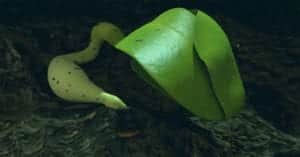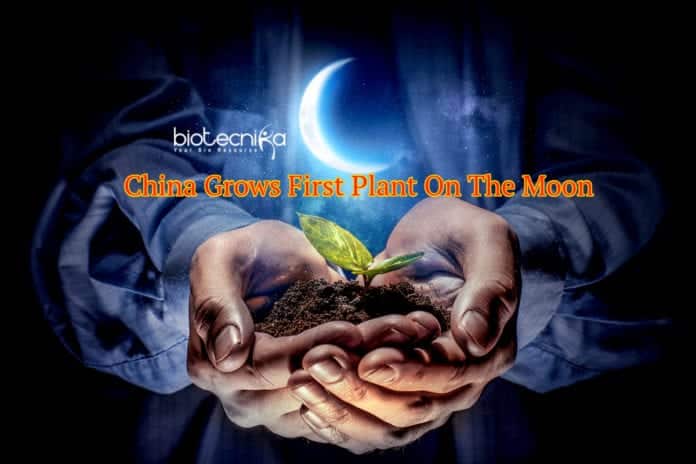China growing cotton on the moon
China has broken new lunar ground by successfully growing cotton on the moon for the first time. This experiment was part of the Chang’e 4 project, in which China is trying to explore the far side of the moon. It is the same lander that recently discovered a mysterious gel-like substance on the moon’s surface.
A cotton plant was one of several organisms encased in a mini biosphere weighing about 2.6 kilograms i.e, 5.7 lbs with a pressure of 1 atmosphere which was aboard the lander. These organisms experienced an environment largely similar to that on Earth, however, organisms did have to contend with both space radiation & microgravity.
In an interview given to an engineering magazine IEEE Spectrum, Xie Gengxin who is the project leader for the experiment explained more about the challenges of growing plants in a restricted environment. Chang’e-4 probe’s weight demanded that the weight [of the experiment] cannot exceed 3 kilograms, he said. That is why it was important to select the biological samples in the experiment carefully.
In the end, the research team selected 5 species of biological organisms to send to the moon including Cotton seeds, arabidopsis seeds, potato seeds, yeast &
; fruit-fly eggs. Most of these died quickly. But the cotton seeds sprouted & grew not one but 2 leaves. Though plants have been grown before on the International Space Station, this experiment marks the first time ever a plant has been grown on the moon.
Despite the hardy cotton’s best efforts in the moon, the leaves of the plant died within one lunar day, which is equivalent to 2 weeks here on Earth. And during the lunar night, the temperatures on the moon drop dramatically, & without external heating, these organisms were doomed by the cold. In order to test whether the equipment could survive, the Chinese researchers continued the experiment for several months.
Originally, the research team had wanted to send animals as part of the experiments including a small tortoise. This idea got scrapped due to the moon‘s limited availability of oxygen. Xie explained even though it is very meaningful to choose tortoise, the oxygen inside the payload can only be used for about twenty days for turtles.
In future experiments, Xie and his research team want to send more complex organisms to the moon including animals. And they may get a chance with China’s Chang’e 6 mission which is scheduled for the early 2020s.






























